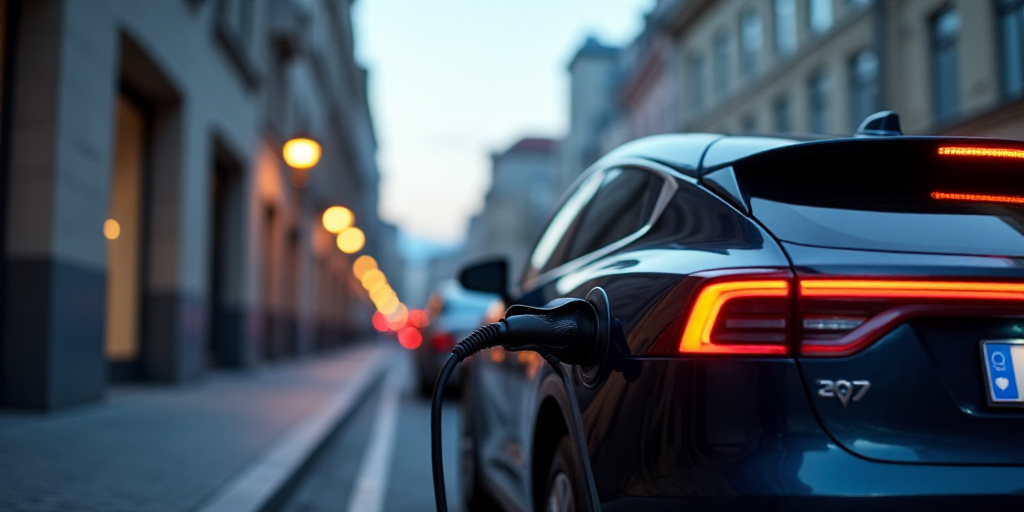How They Work
Unlike vehicles with internal combustion engines, electric cars use electric motors and rechargeable batteries, eliminating the need for oil, transmission changes, catalytic converters, and gas generators. Their operation is simpler, quieter, and more efficient.
Electric motors convert over 90% of battery energy into motion, compared to the mere 25-30% efficiency of conventional gasoline engines. This results in higher energy performance and lower operational costs for electric vehicles.
Performance
One of the most critical and costly components in an electric vehicle is its battery. Internationally, battery lifespan ranges from 8 to 15 years or a distance of 160,000 to 240,000 km. However, this can vary based on usage, maintenance, and rapid charging frequency.
Mexico offers a growing and diverse selection of electric vehicles, ranging from compact, affordable models to SUVs and premium vehicles. The average range is between 300 km and over 500 km, while fast charging times range from 30 to 80 minutes.
Depending on whether they are low, mid, or high-end models, electric vehicle prices can range from 300,000 pesos to over 1 million pesos. Although the initial investment remains high, operational costs (especially for energy) and extended battery lifespan make electric vehicle adoption increasingly attractive.
Sales and Future Projections
The Mexican market for eco-friendly vehicles, including electric, hybrid, and plug-in hybrid cars, continues to grow.
During the first quarter of 2025, 33,360 units of these vehicles were sold, marking a robust growth of 30.1% compared to the same period in 2024, according to figures from the AMDA (Mexican Association of Automotive Distributors).
These numbers reflect a consistent 9.1% participation in the total new vehicle sales, with 23 consecutive months of penetration over 5% in the Mexican market.
Delving into second-quarter behavior confirms a positive trend for the ecological segment: between January and May 2025, 54,684 green vehicles were sold, equivalent to a 9.2% share of total new vehicle sales.
Despite positive sales numbers in the domestic market, challenges persist regarding adequate charging infrastructure.
The Oxford Institute for Energy Studies notes that Mexico has approximately 3,514 public charging stations and 43,942 private points (homes, businesses, or auto agencies), which is insufficient given the growth rate of the ecological vehicle fleet.
In terms of production, the figures are encouraging. The AMIA reports that between January and March 2025, 57,601 hybrid and electric vehicles were manufactured, an interannual increase of 179% compared to the 20,676 units produced in the same period of 2024.
For all of 2024, the total production of these eco-friendly vehicles reached 169,929 units.
Green Vehicles Limited to Large Cities
Another significant figure is the market penetration at a geographical level, where substantial gaps are observed.
In the country, the purchase of green vehicles remains concentrated in a few entities: Mexico City leads the list, followed by the State of Mexico, Nuevo León, Jalisco, and Guanajuato. These entities together account for 58% of the national market.
In summary, Mexico is experiencing a favorable scenario for transitioning to green vehicles due to sustained growth in sales and production, as well as the consolidation of the segment within the automotive market. However, accessibility challenges, limited infrastructure, and high access costs continue to be obstacles.
Key Questions and Answers
- What are electric vehicles and how do they work? Electric vehicles (EVs) use electric motors and rechargeable batteries instead of internal combustion engines. They convert more than 90% of battery energy into motion, making them simpler, quieter, and more efficient than conventional vehicles.
- What are the performance characteristics of electric vehicles? Electric vehicle performance depends heavily on battery life, which ranges from 8 to 15 years or 160,000 to 240,000 km. Mexico offers a diverse selection of EVs, from compact and affordable models to SUVs and premium vehicles. Average range is between 300 km and over 500 km, with fast charging times from 30 to 80 minutes.
- How are electric vehicle sales in Mexico? The Mexican market for eco-friendly vehicles, including electric, hybrid, and plug-in hybrid cars, has seen consistent growth. In the first quarter of 2025, 33,360 units were sold, marking a robust growth of 30.1% compared to the same period in 2024.
- What challenges does the electric vehicle market face in Mexico? Despite positive sales numbers, challenges persist regarding adequate charging infrastructure. Mexico has insufficient public and private charging stations compared to the growth rate of the ecological vehicle fleet.
- Where are electric vehicles most popular in Mexico? The purchase of green vehicles remains concentrated in a few entities, with Mexico City leading the list. Together, these entities account for 58% of the national market.






